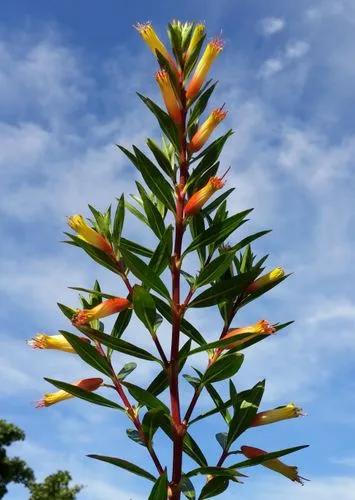Erythrina humeana is a prickly, perennial plant with stems that become more or less woody and persist. It usually grows around 120 - 150cm tall, but sometimes becomes more tree-like and grows up to 4 metres tall. The plant is sometimes harvested from the wild for local use as a medicine. It is grown as an ornamental in gardens, valued especially for its small size and floral display
Dwarf Kaffirboom Care
Erythrina Humeana



Erythrina humeana produces an impressive display of scarlet red flowers en masse, which are a favourite with many different birds who enjoy the nectar. Almost as though it was designed for the garden, the dwarf coral tree produces its flowers just at window height which allows you to do your bird watching from the comfort of your favourite sofa. Similar to the ploughbreaker (Erythrina zeyheri) and the tamboekie doring (Erythrina acanthocarpa), the dwarf coral tree can tolerate cold and frost by going into winter dormancy and simply re-sprouting from the large swollen tuberous roots as soon as spring arrives.The dwarf coral tree produces a number of stems from the ground up to approx. 1.2 - 1.5 m high at which point they branches and produce a mass of scarlet red clusters of flowers on long black stalks making them ideal for the vase. The flowers are rich in nectar and attract a variety of birds but are the favourite of the brightly coloured sunbirds.All Erythrina species contain greater or lesser amounts of toxic alkaloids - these can be found in all parts of the plant but are usually most concentrated in the seeds. Concentrations vary from species to species, in some it is low enough that the plant is safely used as a food. In many, the alkaloids are utilized for their medicinal effects. We have no specific information on the concentration of the alkaloids in this species, but care should be exercised in any use of the plant that involves ingestion.
How to Care for the Plant

Popularity

12 people already have this plant 4 people have added this plant to their wishlists
Discover more plants with the list below
Popular articles






